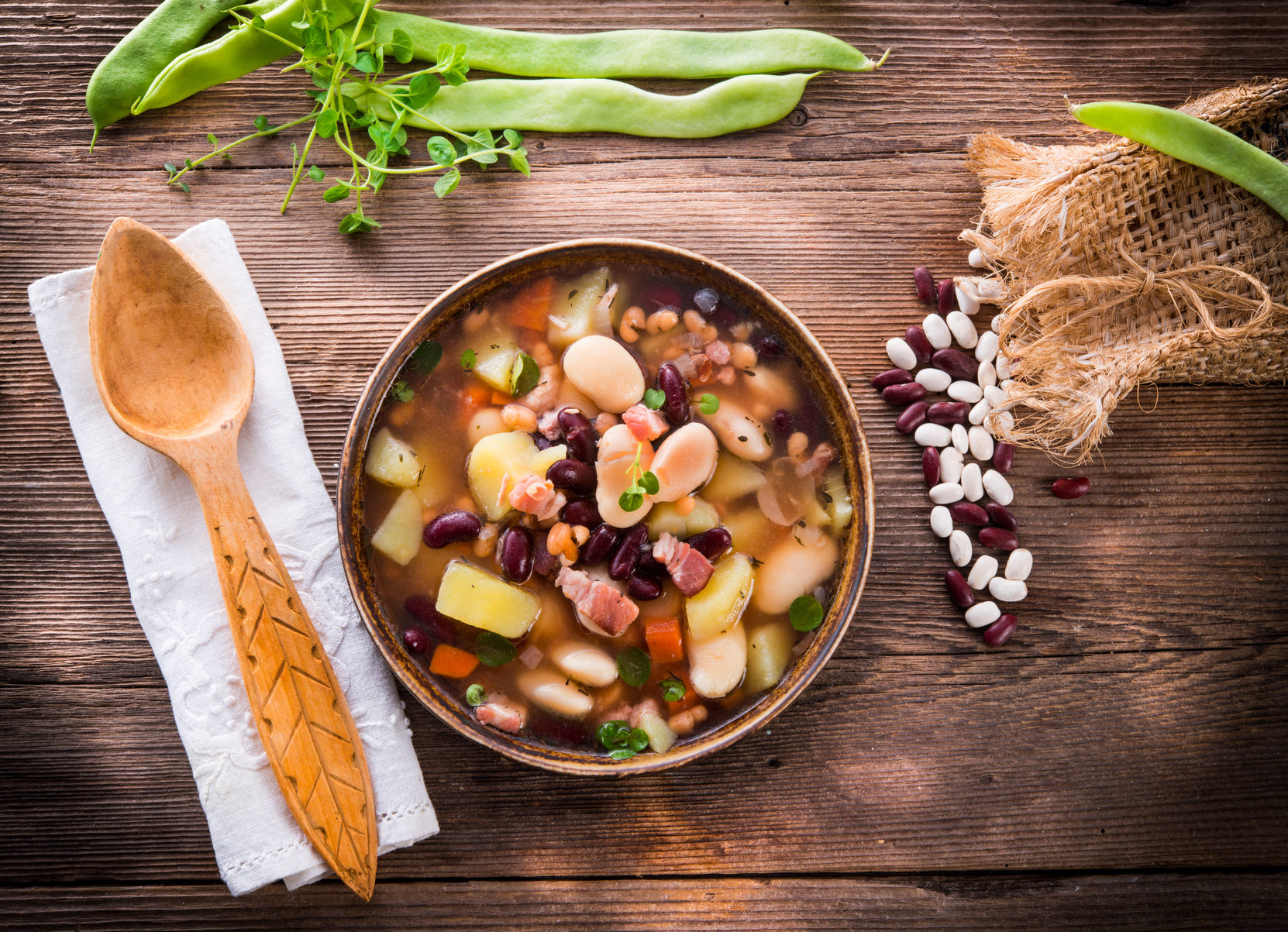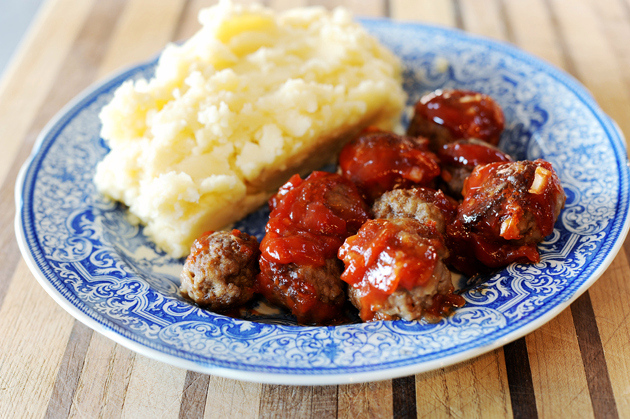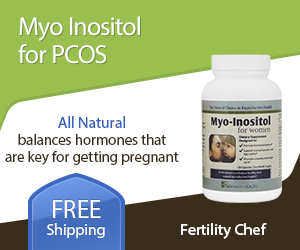This article describes how following a PCOS diet using paleo recipes can help control PCOS symptoms.
Polycystic Ovarian Syndrome, or PCOS for short, is a disorder that afflicts between five to ten percent of women of childbearing age, making it one of the leading causes of infertility in women, and a significant contributor to weight gain that is difficult to reverse for many patients.
While this disease is generally thought to be genetic in nature, there are hypotheses that being a diabetic, or consuming a diet that carries a high risk of leading to diabetes, can lead to the development of PCOS.
It is this latter point that this article is concerned with primarily, as it presents a variable in one’s daily life that can be changed for the better, increasing a patient’s chances of losing unwanted cellulite (and keeping it off).
If we can strip away the dietary inputs that triggers a flood of insulin into the bloodstream of PCOS sufferers (which in turn increases androgen, which then contributes to further weight gain) and replace it with a delicious PCOS diet that reverses this trend, then it stands to reason that they stand a real chance to drop that spare tire and look fabulous again.
Before we get to the fun stuff though, let’s dig a bit deeper into the science surrounding the vicious cycle that entangles women in a blanket of adipose that they can’t seem to escape.
Paleo For PCOS
How The Modern Diet Has Made Life Hard For PCOS Patients
Back in the days when we were huddled in caves, afraid of when a sabre-toothed tiger might decide to make us or a loved one their preferred main course that night, insulin was a very handy hormone to have in our bodies. Like a skeleton key for all the cells of our body1, it allows glucose, a compound present in virtually all of the foods that we eat, to enter our muscles and organs to help them function on a continuous basis.
Glucose is like jet fuel to them, powering our bodies to escape threats when they were suddenly thrust upon us, or when the race was on to take down the gazelle, boar, or woolly mammoth that could supply your tribe with meat and skins that would ensure its comfort and survival.
If it was a quiet night on the plains with no threats in sight, most of the grub you were eating got transported to adipose (fat) cells throughout your body for future use, when you would need to run and exert effort to either escape danger or capture your tribe’s next meal on wheels.
Back then, these biological tank farms of glycogen (the stored form of glucose in fat cells) came in handy, but in today’s modern age, there are no tigers, bears, or lions looking to make us into a long leisurely breakfast, and hunting has been replaced by cruising down the supermarket aisle, complete with just about every type of food imaginable.
With the first seeds (quite literally) of today’s problems set well back in the Neolithic Age, when agriculture began roughly 12,000 years ago. Prior to this time, we had been hunter-gatherers, dating all the way back to the start of humanity hundreds of thousands of years ago.
During this time, we had primarily composed game, which had its food calories rooted in protein and fat, and plants, nuts and seeds, which did have carbohydrates, but virtually all of it was of the complex variety.
With regards to these food sources, the glucose locked within them was slow to be converted to its pure form, insuring that it was only present in manageable amounts in the body, making it easy to consume before it could get stored as excess fat.
With the start of agriculture came grains like wheat and rice, which over time, ended up being milled to produce products that contained simpler forms of carbohydrates.
Labour in those days was still intense though, so the majority of the excess carbohydrates still got sopped up by the heavily taxed muscles of farm workers, factory labourers, housewives, and so on.
In the past century or so though, sugars have gotten much more processed than before, inserted into more foods than you’d realize at first glance, and the emergence of the convenience age have massively reduced the physical activity we engage in from day to day.
All of a sudden, our bodies were flooded with glucose that didn’t even have to be converted from other foods first, and after the minimal needs of the muscles and organs were met, the rest has been transported en masse to our waistlines.
Eventually, this excess glucose damages insulin receptors in all the cells, denying them entry to where they are supposed to go. This leads to an excess of insulin and glucose in the bloodstream, with the former hormone being excreted in mass amounts in a desperate effort to get the bodies cell to sop up the latter compound. Excessive insulin stimulates the ovaries to release more testosterone2, making their PCOS worse, which is a vicious cycle, considering that PCOS is thought to cause insulin-producing beta cells to function abnormally3.
Stop Throwing Gasoline On The Fire
While there isn’t much you can do about the genetic components behind the weight gain and retention aspects of PCOS, the ability to control what you eat each and every day lies in your hands. Time and again, it has been clearly shown that foods containing simple carbohydrates (sugars, white processes starches, etc) causes insulin levels in your bloodstream to spike shortly after consumption.
This makes perfect sense, considering insulin’s role in the body, but for PCOS sufferers, it is analogous to throwing a Molotov cocktail on a raging fire (their disorder that already compromises their ability to produce insulin in an orderly fashion). To obtain results where simple caloric restriction (as appetite control mechanisms are lacking in PCOS individuals4) has failed, chucking out meals that emphasize foods like white bread, pasta and rice for dinner, and cookies, candies, cakes and the like for dessert in favour of meals high in protein and fat has appeared to be.
Indeed, it has been proven by recent studies that women that consume a greater amount of protein in their diet versus carbohydrates lost more weight5 and had a slimmer waist size when compared against a control group. It seems that the Paleo crowd is on to something in this matter…
Eat Meat, Lose Fat? The Science Behind A High Protein PCOS Diet
When you reduce your input of carbohydrates and ramp up your consumption of protein, you gain the materials and nutrients your body needs, since most foods green-lighted for consumption in this lifestyle tend to be nutrient-dense, bulkier and unprocessed.
The natural fats that you’ll consume will also aid with satiety (feeling of fullness), greatly reducing the PCOS problem of having hunger pangs return mere hours after eating6. It is one of the best diets for PCOS.
The lower overall amount of calories7 involved with eating paleo combats the problem of caloric overconsumption due to appetite control problems that it induces, which dovetails perfectly with the lower overall amount of calories that PCOS patients need, according to the study contained within the aforementioned link.
The lack of available carbs in your body will eventually cause it to revert to ketosis to acquire the necessary fuel to keep running, which metabolic adaptations occurring to make this more efficient8 as you mostly replace carbs with fat and protein.
Induced ketosis will see you in a state where glycogen stores in your fat cells are cannibalized at a very high rate (compared to the conversion rate of the average adult/PCOS sufferers these days), as the abundant supplies of carbs that were previously present is simply no longer there. While you’ll be losing weight through this regime initially, you’ll also want to have a cheat day every 5-7 days, where you can consume high carbohydrate food.
This stimulates leptin, a hormone that regulates fat oxidation, to kick into overdrive. It will stay in a heightened state of action for some time after the cheat day, pulling even MORE fat that was in your adipose cells before then9, using it as part of the ketogenic energy system that the Paleo diet hinges upon.
Even before you reach that point, having one day where you are allowed to be bad (from a dietary perspective) can help adherence to this rewarding but challenging path, as most have associated strongly emotional ties to many types of food high in simple sugars, like chocolate cake, ice cream, bakery treats, and so on.
The Wonderful World Of Paleo Friendly Foods
Many folks can’t conceive of a world without bread, sugar, pasta and other starchy and sweet foods. However, once you leave the middle aisle of the grocery store behind you and rediscover the nourishing foodstuffs that hang out along the edges, you’ll be wondering how you could ever turn your nose up at such life-affirming meats, eggs, fruits, vegetables, nuts and seeds!
Actually, we lied a bit: you can visit the middle aisles, but only for a few things. Spices and oils like EVOO are a godsend for flavouring food in the absence of condiments like ketchup, which are chock full of high fructose corn syrup, one of the worst carbs there is due to its extreme density of sugars, the toxicity of fructose, and its alleged addictive properties10 Other products you’ll also want to snatch before retreating to the edges are beans (the dry ones, not the canned ones drenched in sugary syrup) and seeds (flaxseeds especially, for reasons we’ll get into in a second).
As for the bulk of the foods you’ll get at the store, they will be along the outer periphery of the market, which is where you’ll find the real, unprocessed products that will form the backbone of our new PCOS diet.
Lean meats are ALL fair game for this lifestyle, with poultry being better overall than darker, fattier meats (don’t shun beef and pork though, for varieties’ sake, unless they are contraindicated by your beliefs).
Almost all vegetables are fine, with the exception of white potatoes11, as their high glycemic, starchy nature disqualifies them for all meals (except the cheat ones, of course!) Vegetarians can go Paleo, but they will need to pay special attention to ensure they get enough protein to meet the demands of their lifestyle.
In order for it to work, you’ll need to consume at least 0.7 grams per pound of bodyweight12. Thus, all the eggs, beans, nuts, seeds and veggies you eat will have to amount to about 105 grams of protein per day if you presently weigh 150 pounds. It is difficult if you’re not a consumer of the flesh, but it can be done.
Finally, a big driver of PCOS problems apart from excessive insulin production run are elevated testosterone levels that results from this. As it happens, many Paleo friendly foods also double as a suppressor of this hormone, an attribute that is most helpful in the fight against PCOS’s fattening effects.
With Omega 3 fatty acids having a strong role in this regard13, incorporating foods like flaxseeds, walnuts, many types of seafood like salmon and sardines, and grass-fed beef into your PCOS diet will aid in your battle against the bulge. Click here for a full list of PCOS diet super foods.
Paleo Friendly Meals That Rock
The tendency when starting a dietary regime like a PCOS diet using paleo recipes is to default to the meals that you’ve prepared in the past that have been protein heavy, with all carbs cut out of the picture.
While the latter action is definitely what you’ll want to do, you likely have a limited menu of options available in your memory banks, which can lead to stagnation in variety.
This will endanger your adherence to this regime, and it may lead to deficiencies of certain nutrients if you’re only having chicken and spinach for all three meals of the day. As such, you’ll want to seek out some original ideas to add intrigue and joy into your new way of eating. To close out this article, we will suggest three different meals that will nourish both your body and your taste buds.
Check them out below, and we hope it will inspire you to experiment in this new culinary world that you are about to enter…
1) Sundried Tomato Pesto Bacon Wrapped Meatloaf Rounds
This treat14 will banish thoughts of the paleo PCOS diet strictly being a utilitarian regime that has no flavour or beauty. Start by making a pesto by chucking sundried tomatoes, spinach, garlic, tomato paste, olive oil, salt, pepper, and oregano, basil and thyme in a food processor, pulsing them together until it forms an integrated paste. Using grass-fed ground veal and ground beef, mix in a bowl with the aforementioned pesto, almond flour, more herbs and seasoning, and a beaten egg.
Form separate meatloaf mounds that can be wrapped with a bacon rasher. Top it with pesto and cook it in the oven for about 45 minutes. Drooling yet?
2) Oven Omelets with Sweet Potato Crust
Now I know we said that potatoes were forbidden earlier … WHITE potatoes. Sweet potatoes are composed of more complex carbohydrates, which break down much slower than the quick fuel with simple carbs are. With that wrinkle out of the way, here’s how to make this breakfast delight15
Oil up two pie pans, and then thinly slice up one or two sweet potatoes, coating the bottom of the pan completely with their tasty goodness. After glazing them with salt and pepper, start creating the omelet mixture, which contains a bunch of beaten eggs, sautéed onions, peppers and garlic, organic free range sausage (no nitrates or antibiotics), and diced sundried tomatoes. Pour the completed concoction in the pie pans, and cook it in a preheated oven for 40 minutes. Breakfast will never be the same again!
3) Sweet Potato Orange Soup
Veggies can also join in on the Paleo fun, as previously mentioned. There are many different delicious meatless options that will help you get the protein and calories you need, from zucchini pancakes to cauliflower fritters. For overall taste and the perfect warm up on a cold winter’s day, we have decided to zero in on a savoury number called Sweet Potato Orange Soup16.
Start by preheating your oven to 425 Fahrenheit, then take the sweet potatoes that you’ll be using for the base of our soup stock and poke holes in the tuber with a fork. Place them on foil on one of the grates in your oven, and roast those bad boys for 45 minutes to an hour. When your fork goes into the potato with little difficulty, they’re done.
After this, get your saucepan, place it on the stovetop with medium heat engaged, and add olive oil to it. Sautee carrots, celery, and seasonings with the pot cover on, and reduce heat to low after adding the vegetables. After they are soft, add the softened sweet potato to your saucepan, along with vegetable stock and the zest of an orange.
Let it simmer for 15 to 20 minutes, then mix in freshly squeezed orange juice and blend (add coconut milk for added thickness). Click here for a full list of PCOS diet super foods.
References
1. Control Diabetes: How does Insulin work
2. The Journal of Clinical Endocrinology & Metabolism
3. American Diabetes Association
4. Informa Healthcare
5. The American Journal of Clinical Nutrition
6. Informa Healthcare
7. US National Library of MedicineNational Institutes of Health
8. American Journal of Physiology Endocrinology and Metabolism
9. US National Library of MedicineNational Institutes of Health
10. Canadian Association for Neuroscience
11. Cesar’s Health
12. US National Library of MedicineNational Institutes of Health
13. The World’s Healthiest Foods
14. Multiply Delicious
15. The Spunky Coconut
16. Civilized Caveman Cooking Creations







Please help me I am so tired of this pcos staff….pretty please